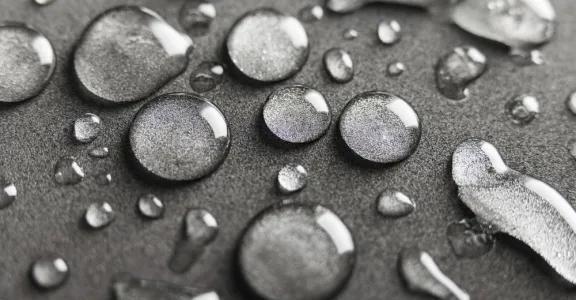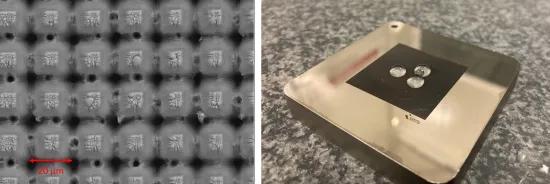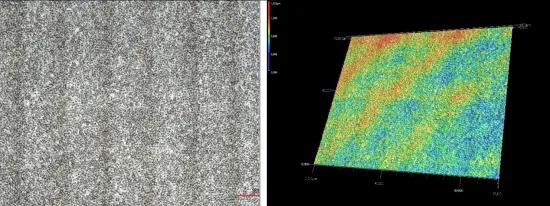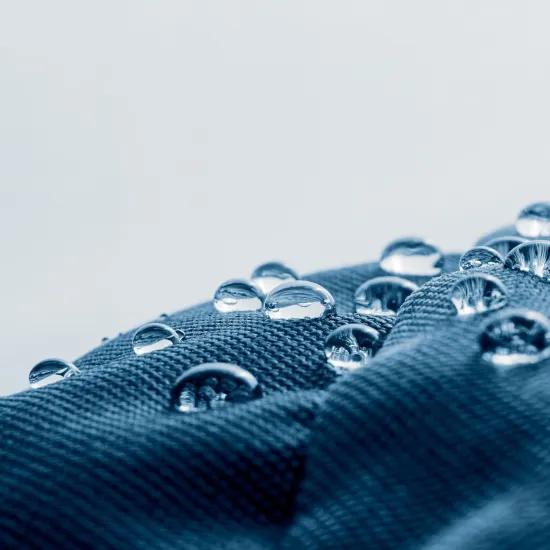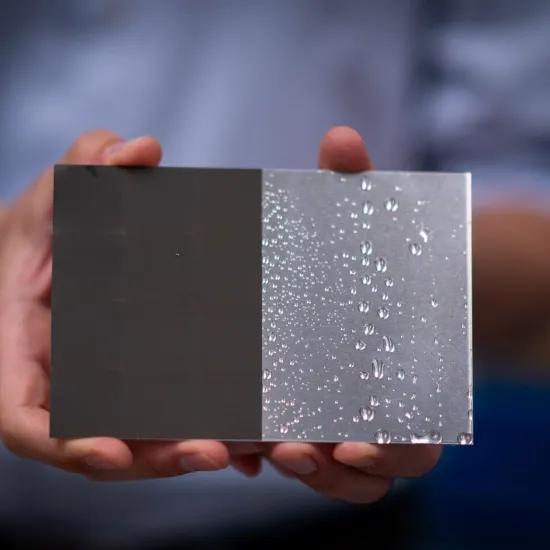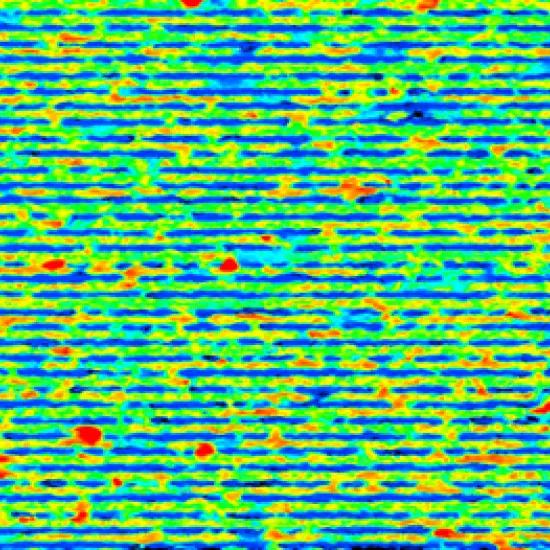Until recently, Sirris used multi-scale texturing to make surfaces water-repellent. This technique creates superhydrophobic surfaces but is quite time-consuming. That is why we looked for a different solution: the results we obtained with LIPPS ('Laser-Induced Periodic Surface Structures') are already promising.
That texture can make surfaces water-repellent is a widely-known phenomenon in both biology and technology. Nature has been using this for millions of years to give animals and plants a better chance of survival, and recently humans have also been able to make surfaces water-repellent by manufactured textures. This is a particularly interesting feature as a number of surface functionalities are derived from this, including self-cleaning properties, anti-icing, antibacterial and anti-fouling.
Different laser processes
At Sirris, we have used laser processes to make surfaces hydrophobic via both direct and indirect routes. Indirect means, for example, that we use a roll-to-roll process to apply a texture to a film, which then becomes hydrophobic, or give a plastic product this functionality during injection moulding. This has already been described in earlier blog posts. Direct methods use laser ablation to give the product a certain structure, which then makes the surface water-repellent.
Until now, the technique Sirris used for this involved the creation of 'multi-scale' structures, i.e., microstructures with a nanostructure on top. That combination ensures that the contact angle of water exceeds 140° (a normal surface has a contact angle of 90°). A contact angle of 150° is defined as superhydrophobic, which is to say the droplets bounce off (see the figure below). Coincidentally, these structures are also a deep black because they also absorb light very well. You can read more about this in our blog about ultra-black textures.
Example of a superhydrophobic structure and its effect on water
A disadvantage of these multi-scale textures created by the laser process is that they take some time to create, although it is true that major steps have been taken in the field of new, ultrashort-pulsed high-power laser sources that can make these textures in an acceptably short time.
LIPSS
This didn’t stop Sirris from taking a step forward here as well. By making use of previous knowledge and the existing literature, we have textured a surface using another method: the application of LIPSS. Laser Induced Periodic Surface Structures (LIPSS) are nanostructures in the order of magnitude of the wavelength of the laser light used. They appear on the surface as ripples or towers, depending on the polarity. This phenomenon occurs just above the material's ablation limit and at high scan rates and frequencies, making it a particularly interesting way to texture surfaces. Instead of taking tens of minutes to treat a surface with our 10 W laser, this can now be done in seconds. This texture can be seen in the following photos with, below, the water contact angle found for this texture. As we often see with laser-generated hydrophobic textures, there is an aging process, and the surface only reaches its highest contact angle after about two weeks. We are currently looking into the cause of this in order to speed up this process.
Because this surface is an order of magnitude faster to make, we think we have taken a new step for a range of applications where hydrophobicity can play a role, such as for antibacterial, anti-fouling and anti-icing applications.
Would you like to know more? Please feel free to contact us!
This article was published as part of the COOCK project Surfacescript, with the support of VLAIO (Flanders Innovation & Entrepreneurship).
